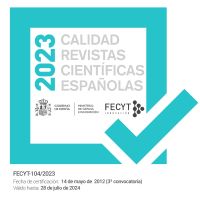ACCESSIBILITY, ALSO IN CAREER GUIDANCE
DOI:
https://doi.org/10.5944/reop.vol.35.num.3.2024.40838Keywords:
career guidance, technology, educational innovation, accessibility, educational inclusionAbstract
We don't usually reflect on accessibility when thinking about academic and career guidance, but not only is the information we offer important, also considering whether it reaches its recipients properly. For the last two years, this goal has been the focus of the publications "Cuaderno de Orientación Académica y Profesional" and "Guía para Familias y Alumnos de la Comunidad de Madrid": to facilitate users’ access, to be able to inform themselves, and make well-founded and autonomous decisions. To achieve this goal, the publications are evaluated in two different ways: on the one hand, data from Google Analytics are analyzed, providing relevant information about the use and scope of the publications. On the other hand, a survey has been conducted among teachers to obtain information about the use given to this tool and the teachers’ perception about its usefulness and possible changes. With the data obtained, improvements have been implemented, adding or highlighting content, introducing new filters and search formats, and improving accessibility. As a result, we currently have at our disposal a specific guidance resource that also contributes to social and educational inclusion and to teachers’ long-life learning. Furthermore, an increasing use of ICT in guidance processes is confirmed, as well as the significance of establishing different ways to evaluate, monitor and disseminate these guidance resources to find out their impact and acceptance, so that we can adapt them to the users’ needs and expectations.
Downloads
Downloads
Published
How to Cite
Issue
Section
License
Copyright (c) 2024 Olga María Fernández Soto

This work is licensed under a Creative Commons Attribution-NonCommercial 4.0 International License.
Las obras que se publican en la revista REOP están sujetas a los siguientes términos:
1. Los autores conservan los derechos patrimoniales (copyright) de las obras publicadas, y garantizan a la revista el derecho de ser la primera publicación del trabajo al igual que permiten la reutilización de las mismas bajo la licencia de uso indicada en el punto 2.
2. Las obras se publican en la edición electrónica de la revista bajo una licencia Creative Commons Reconocimiento-NoComercial 4.0 Internacional . Se pueden copiar, usar, difundir, transmitir y exponer públicamente, siempre que: I) se cite la autoría y la fuente original de su publicación (revista, editorial y URL de la obra); II) no se usen para fines comerciales; III) se mencione la existencia y especificaciones de esta licencia de uso.
3. Condiciones de auto-archivo. Se permite y se anima a los autores a difundir electrónicamente la publicación de sus obras, ya que favorece su circulación y difusión y con ello un posible aumento en su citación y alcance entre la comunidad académica.






